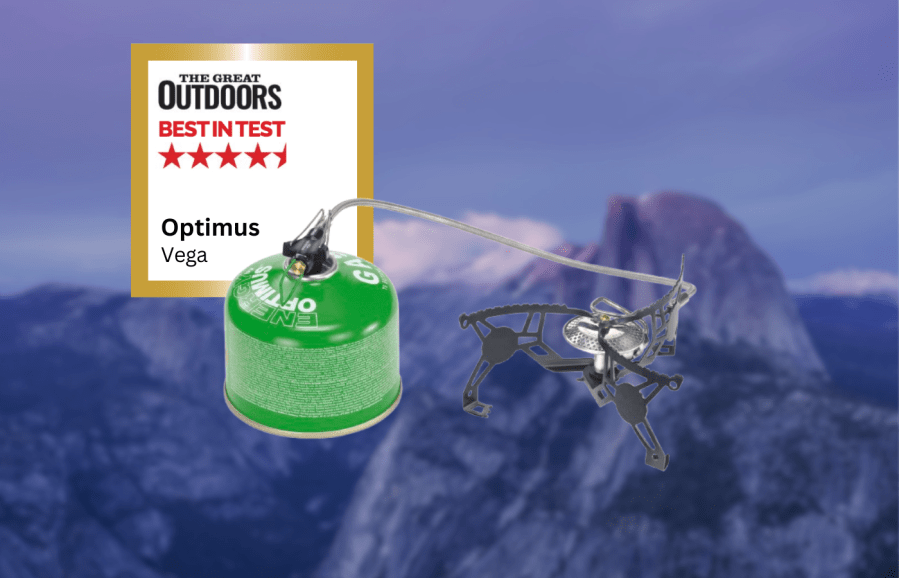Peter Macfarlane gives the Optimus Vega his Best in Test – and this stove is awarded in our Gear of the Year.
The Optimus Vega is a remote canister stove, the burner sits just above the ground and is connected to the gas by a flexible hose.
Peter Macfarlane’s Best in Test
It’s very light, folds aways small, and its stability and wide burner make it the best I’ve tested for real cooking.- stable
- adaptable
- winter performance
- the pot rests could be less steeply angled
| Quick specs |
|---|
| Price: $119.95 / £89.95 (available from Base Camp Food) Weight: 185g Fuels: gas canister Dimensions assembled 74mm h x 160mm Ø Burner Diameter: 48mm Power: 2600W Boil time: 3m10s x 500ml Fuel used: isobutane/propane canister katadyngroup.com |
The burner has 3 large pot stands/legs which gives it both a very stable footing and options to support a variety of cookware from my 80mm wide titanium mug to a frying pan for proper cooking. The legs have tent peg holes for extra stability.
Between the burner and the 300mm hose there is a pre-heat loop, something individual to the Vega in this roundup. Most gas stoves burn gas that evaporates from the liquified contents of the canister but the preheat allows you to invert the gas cannister, which brings liquid gas to the burner where the heat evaporates the liquid gas for burning. This gives consistency of fuel supply especially in colder temperatures.
The burner control is a long plastic-coated wire handle at the canister end, with 2 wire feet to support the canister and allow access. With the control placed here, there’s no concern about burning fingers at the burner.
The burner is wide with an even heat output and its low height of 40ml off the ground means it’s perfect for use with a wind shield and for more exposed locations – I’m happy using the Vega on an open hillside, behind a rock or dug into the snow.
If I could make improvements, it would be a slightly longer hose, and a more moderate angle on the potstands (for smaller pots). It comes with a circular aluminum shield which it can sit on to reflect some heat back, and while it’s not as fast to boil as some heat exchanger systems, it is very efficient with the can inverted.
It’s very light, folds aways small, and its stability and wide burner make it the best here for real cooking.
Testing conditions
Weights and boiling times were recorded by Peter in various conditions outside and at home to achieve a benchmark time. The stacking systems height includes the plastic feet and a 230g gas canister, the others from canister base to potstand top. The stoves have been used across all seasons, most often on hill days with a wind shield as well as at camp and on bothy trips.
This review was first published in the November 2025 issue of The Great Outdoors.






